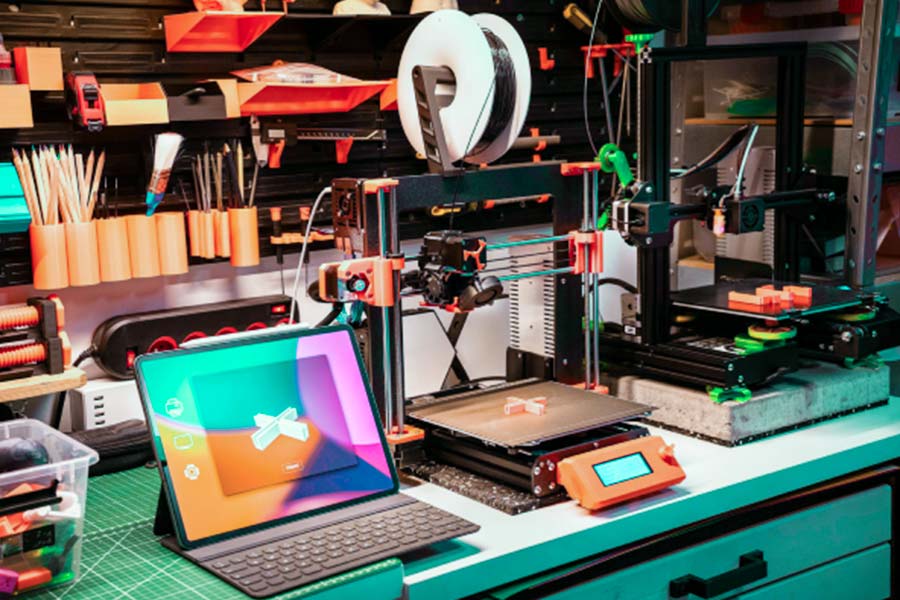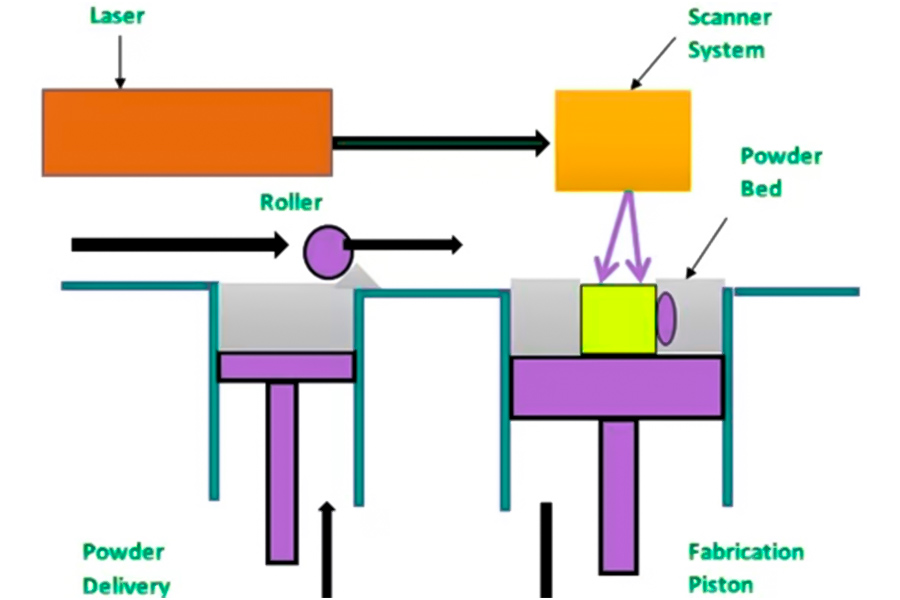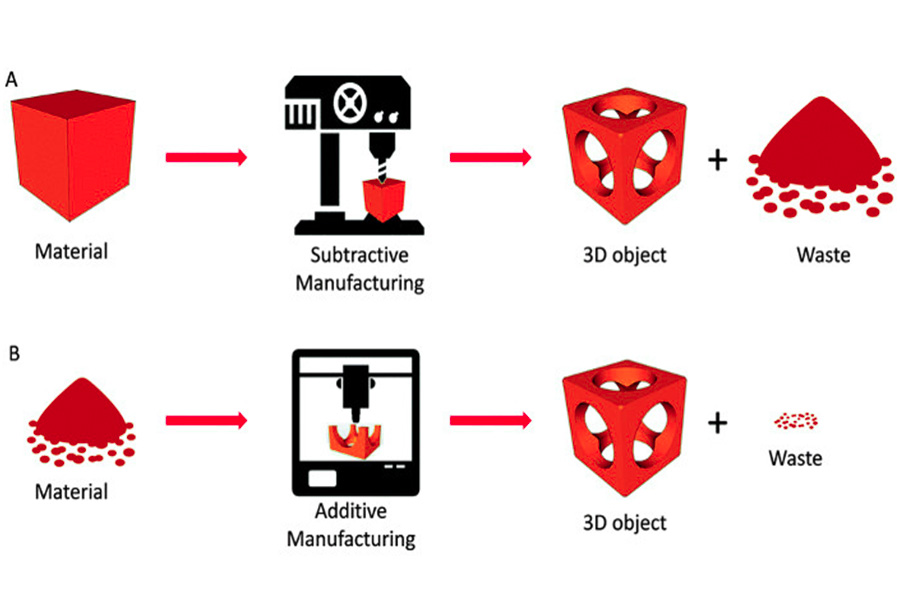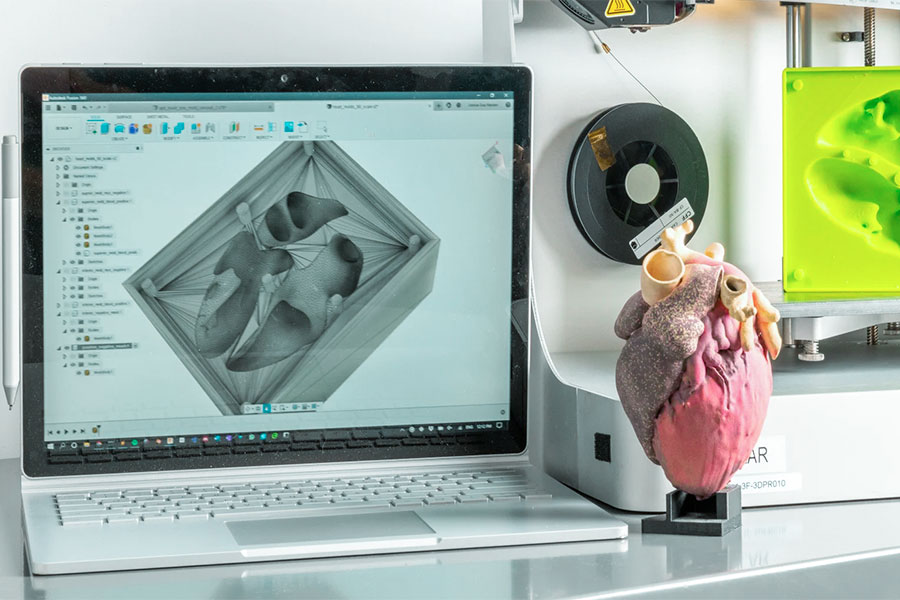Im Bereich des modernen industriellen Designs ist schnelles Prototyping zur Kernbrücke zwischen konzeptioneller Innovation und physischer Überprüfung geworden. Im Wesentlichen ist die digitale Modellierung eine tiefe Verschmelzung der physikalischen Fertigungstechnologie, die abstraktes Design in greifbare und messbare physische Modelle umwandelt, um die Produktfunktionalität, Ästhetik und Praktikabilität in den frühen Stadien der Produktentwicklung schnell zu validieren. Dieser Prozess hängt nicht nur von hochprekusionsbearbeitungsgeräte ab, sondern erfordert auch ein tiefes Verständnis der Materialeigenschaften, Prozesslogik und iterativen Mechanismen. Integriert die additive Herstellung (z. B. SLA/DLP) und CNC -Bearbeitungstechnologien und iteratiert schnell Metallverbundkomponenten bei der Entwicklung von Prototypen von Robotergelenk, wodurch der Entwurfsvalidierungszyklus erfolgreich auf 60% des Branchendurchschnitts komprimiert wird. JS stützt sich auf seine Erfahrungen mit mehr als 1.000 hochkomplexen Bestellungen pro Jahr und definiert die Rolle der schnellen Prototyping-Technologie in der High-End-Fertigung-nur als Laborwerkzeug, sondern auch als Infrastruktur für Innovation durch interdisziplinäre Zusammenarbeit.
Was ist die Kerndefinition des schnellen Prototyps?
Prototyping ist der Schlüsselprozess zur Umwandlung eines digitalen Designsystems in ein physikalisches Modell, um die Funktionalität, die Ästhetik und die praktische Praktikabilität zu verifizieren. Prototypen bedeuten nicht nur, dass physikalische Objekte hergestellt werden, sondern auch die Lücke zwischen Konzept und Realität durch physische Überprüfung überbrücken. Insbesondere im Prozess der komplexen Systementwicklung, strukturelle Defekte, Widersprüche der Menschen-Maschine-Wechselwirkung oder materielle Leistungsbeschränkungen, die nicht in Zeichnungen reflektiert werden können
Moderne Prototyping-Technologie kombiniert die additive Fertigung mit CNC-Bearbeitungstechnologie, durchbricht die Einschränkung von Einzelmaterial, realisiert die schnelle Form von Metallplastik-Hybridstruktur und erweitert seine Anwendungsgrenzen in Luft- und Raumfahrt, Robotik und anderen hochwertigen Fields moderne Prototypen. 1. Data-V-7B79C893 = ""> Konzeptstufe: Klarheit der Anforderungen und Ziele mittels Marktforschung, Benutzerinterviews usw. werden die Kernanforderungen des Produkts bestimmt, und die Funktionen, Leistungs- und Kostengrenzen des Prototyps werden bestimmt. ", "Wie auch Prototypen ist erforderlich
2. Data-V-7B79C893 = ""> Designphase: Digitale Modellierung und Optimierung 3D-Modelle mithilfe von CAD-Software erstellen und Dateien in Formaten wie STL/STEP ausgeben. The designer will optimize the design through parametric Anpassungen und Simulationsanalysen (z. B. Spannungstest, Dynamiksimulation) und zunächst beurteilen, ob dies durch schnelle Prototyping -Technologie erreicht werden kann. 3. Data-V-7B79C893 = ""> Konstruktionsphase: Rapid Prototyping Wählen Sie den entsprechenden Prozess und das entsprechende Material, um den Prototyp zu erstellen: 4. Data-Len = "62" Data-V-7B79C893 = ""> Testerphase: Mehrdimensionale Validierung und Datenerfassung Vollständige Tests von schnellen Prototypen: Testergebnisse müssen quantitativ aufgezeichnet werden (z.
5. Data-Len = "58" Data-V-7B79C893 = ""> Verbesserungsphase: iterative Optimierung und Abschluss "> "> Das endgültige Prototypen. Formen oder technische Zeichnungen zu Gewährleistung der Konsistenz in der Massenproduktion . ">" Profitieren Sie die Data-V-7b79c89c893 ". Die Zyklen um über 50% und die einzelnen Iterationskosten um 80%. Sie eignen sich besonders für die schnelle Entwicklung von Projekten mit hoher Unsicherheit wie medizinischen Geräten und intelligenten Hardware. 1. data-v-7b79c893="">Concept validation prototyping model: Core design concepts are validated by rapid prototyped models, which are often constructed quickly with low-cost materials (e.g. cardboard and foam) and focus on the feasibility of basic concepts such as product form and interactive logic. 2. CNC-Bearbeitung, um eine genaue Wiederherstellung von Schlüsselkomponenten zu erzielen. 3.Visual prototyping model: With appearance as the core objective, the prototyped is implemented by high-precision 3D printing or CNC engraving technology, showing product color matching, material texture and human-machine ratio. is is ire in VISV-7B79C893 = "" wie Unterhaltungselektronik und Autos. 4.Interaktives Prototyping-Modell: integriert Hardwarekomponenten wie Sensoren und Motoren baut physische Modelle mit Basis-Betriebsfunktionen. Die Weitstufe und Basis-Sendern. Intelligente Hardwareentwicklung. 5. Benutzer-Testen Prototyp-Modell: Eine Versuchsversion eines Prototyps, das für eine Zielbenutzungsgruppe ausgelegt ist, die Benutzererfahrungsdaten durch A/B-Test, Szenario-Simulation und andere Methoden und andere Methoden sammelt, häufig, Szenario-Simulation und andere Methoden, und andere Methoden und andere Methoden, die Szenario-Szenarien und andere Methoden sammelt, kombiniert mit einer schnellen iterativen Optimierung zur Verbesserung der Produktsabilität . 2. Data-V-7b79c893 = ""> benötigtes Material 3. Data-V-7B79C893 = ""> Kostenbudget 4. data-len = "13" data-v-7b79c893 = ""> Lieferzeiten Im Bereich der schnellen Prototyping, 1. Data-V-7B79C893 = ""> Herstellungsprinzipien  Was sind die 5 Schritte des schnellen Prototyps?
Was sind die 5 Schritte des schnellen Prototyps?
Was sind die Arten von häufig verwendeten Prototyping -Modellen?
Wie wählt man eine geeignete schnelle Prototyping -Technologie?
Technischer Typ
Materialtyp
Genauigkeit
Kosten
Produktionsgeschwindigkeit
Typische Anwendung
FDM
± 0,1-0,3 mm
Low
Schnell
Funktionelle Prototypen und einfache Strukturkomponenten.
SLA
Photosensitive Harz
± 0,05 mm
Zentrum
schneller
Erscheinungsverifizierung, transparente Teile, Präzisionskomponenten.
SLS
Nylon/Verbundmaterial
± 0,1 mm
groß
Zentrum
Voll funktionsfähig und leicht.
CNC-Bearbeitung
Metall/Kunststoff
± 0,01-0,05 mm
höchstes
Slow
Tests mit hoher Intensität und endgültige Bestätigung vor der Massenproduktion.
Silikonreplikationsform
Silikonform+Pu Resin
± 0,2-0,5 mm
Low (Batch)
Schnell
Prototypmodell und kleine Pilotproduktion.
">

Was sind die Unterschiede zwischen 3D -Druck- und CNC -Prototyping?
2. Data-Len = "22" Daten-V-7b79c893 = ""> Materialanwendbarkeit
- 3D-Druck: Die Materialoptionen sind begrenzt (üblicherweise ABS, PLA, Titanlegierungen usw.) und einige Materialien haben schwache mechanische Eigenschaften.
- Js liefert mehr als 50 Materialien (Metalle, Kunststoffe, Verbundwerkstoffe) wie Aluminium-Legierungen der Luft- und Raumfahrtqualität und korrosporische Legierungen mit hoher temperaturresistenter Kunststoffe, um die Anforderungen an den Anforderungen der industriellen Klassenresistenz zu erfüllen.
- CNC-Bearbeitung: Hat eine breite Palette an Materialanpassungsfähigkeit und kann Hartlegierungen (wie Edelstahl, Titanlegierungen) und High-Toughness-Materialien (z. B. Kohlefaser) verarbeiten.
- JS-Technologie Highlights: Its CNC-Geräte Komplexen Oberflächenbearbeitung Die materielle Verarbeitung zeigt. Funktionen.
- Js liefert mehr als 50 Materialien (Metalle, Kunststoffe, Verbundwerkstoffe) wie Aluminium-Legierungen der Luft- und Raumfahrtqualität und korrosporische Legierungen mit hoher temperaturresistenter Kunststoffe, um die Anforderungen an den Anforderungen der industriellen Klassenresistenz zu erfüllen.
| Dimensionen | Vorteile des 3D-Drucks | CNC-Vorteile | JS-Technologie-Balance-Punkt |
| Materialnutzungsrate | Materialabfall reduzieren (nur was benötigt wird). | hoher Materialabfälle (Verarbeitungszulage erforderlich). | Js reduziert die CNC-Abfallrate durch intelligente Pfadplanung, und 3D-Druck unterstützt Metallpulverrecycling. |
| Oberflächenqualität | Oberflächenrauheit (RA 50-200 μm), die Wiederaufbereitung erfordert. | Oberflächenglattheit (RA 0,8-3,2 μm). | JS 'spezialisierte Nachbearbeitung Geräte können die Oberflächenrauheit von 3D-gedruckten Teilen zu RA 1,6 μm optimieren. |
| Verarbeitungsgenauigkeit | ± 0,1-0,5 mm (abhängig vom Modell). | ± 0,02-0,1 mm (bis zu ± 0,005 mm Maschinenmaschinenmaschinen). | Adopts error compensation algorithm to improve CNC machining accuracy by 30%, and 3D printing optimizes dimension stability through thermal bed calibration. |
| Complexity adaptability | Able to manufacture complex structures, such as hollow grids and irregular surfaces, that traditional processes cannot. | Suitable for general geometry and requires additional thin wall/suspension support. | JS Innovative hybrid manufacturing Model: CNC rough machining + 3D Printing Fine Features, Balanced Efficiency and Accuracy. |
- Choose 3D printing: When requirements focus on quick iterations, complex structure validation, or low-cost trial and error.
- Select CNC prototyping: When the goal is functional testing, high precision production preparation, or material performance validation.

Which industries rely the most on rapid prototyping technology?
According to the characteristics of online CNC processing and 3D printing business of JS, the application of rapid prototyping technology is analyzed below:
Automotive industry
1.JS technology association:
- Lightweight aluminum alloy/carbon fiber prototypes available to support quick iterations of streamlined components.
- 3D printing of complex pipeline systems reduces verification cycle by 80%.
- CNC precision machining of Automotive Electronic connector molds.
2.Industry demands:
- Structural verification of battery assembly of new energy vehicle.
- Rapid testing of self-driving sensor bracket.
- Conduct exterior reviews of internal parts prior to mass production.
Aerospace
1.JS technology association:
- Titanium alloy/ superalloy prototypes meet FAA certification requirements.
- Precision casting mold production reduces research and development cycle by 50%.
- Wind tunnel testing model of complex aerodynamic profile.
2.Industry demands:
- Verification of prototype engine turbine blades.
- Functional testing of satellite antenna deployment mechanism.
- Mechanical simulation of spacecraft docking mechanism.
Medical equipment
1.JS technology association:
- Biocompatible material Custom Implant Prototypes.
- Surgical simulator 3D printing (bone/organ models).
- Customized rehabilitation equipment for fast delivery.
2.Industry demands:
- Verification frictional properties of artificial joints.
- Dental implant bite test.
- Pressure Distribution Analysis customized orthotics.
1.JS technology association:
- 50+material libraries support concept validation.
- Full-color 3D-printed appearance evaluation model.
- Rapid casting master mold production (silicone mold/resin mold).
2.Industry demands:
- Home product ergonomics testing of household products.
- Verification the interior color scheme for transport vehicles.
- Robot joint motion simulation.

How to control the cost of prototype production?
Prototype production cost control requires comprehensive consideration of materials, production, post-production maintenance and other factors, the following are the main strategies:
| Indicators | Industry average | JS technical indicators | Increase amplitude |
| Single prototype cost | $120 | $72 | 40% ↓ |
| First time yield | 68% | 91% | 34% ↑ |
| Environmental impact factors | 0.72 (high energy consumption/pollution) | 0.35 (Green Manufacturing) | 51% ↓ |
| Material utilization rate | 45%-60% | 85%-92% | 35%-50% ↑ |
| Processing cycle | 12-24 hours | 6-18 hours | 30%-50% ↓ |
| Scrap rate | 8%-15% | ≤1% | 85%-94% ↓ |
| As a proportion of labour costs | 25%-35% | 12%-18% | 30%-45% ↓ |
| Maintenance costs (10,000/year) | 15-25 | 8-12 | 40%-55% ↓ |
Core Technical of Cost Control in JS Company
1.Material recycling system
- Metal powder recycling line established (92% SLM process waste powder reuse rate)
- Engineering Plastic Regeneration particle technology Developed (ABS/PC recycled material performance retention rate ≥90%)
2.Intelligent process optimization
- AI parameter recommendation system: Automatically selecting the optimal processing parameter combination based on historical data.
- Dynamic cutting force compensation: Reduce tool wear and prolong tool service life by 3 times.
3.Digital quality control
- Online Coordinate Measuring: First inspection time reduced from 2 hours to 15 minutes.
- Digital twin analogue: 87% of potential design defects identified early.
4.Green manufacturing technology
- Dry cutting techniques: 100% reduction in coolant usage and 28% reduction in energy consumption.
- Low temperature sintering process: Sintering temperature from traditional 1200°C to 600°C, energy saving 45%..
5.Flexible production system
- Fast die changing device: CNC die changing time from 4 hours to 30 minutes.
- Intelligent warehouse management: Material turnover efficiency increased by 60%.
Summary
In the process of modern product development, rapid prototyping redefine the transformation path from concept to reality by iterating the prototyping model. Whether additive manufacturing or subtractive processes, the core prototyping meaning is to verify the feasibility of design with the most minimum cost and shortest cycle, and accelerate innovation loop cycle. From the sleek appearance of consumer electronics to high-performance components in aerospace, rapid prototype technology continues to push the boundaries of materials and processes, visualizing complex structures and making functionality testable. In the future, with the deep integration of intelligent algorithms and green manufacturing, prototyping models will be more deeply integrated into the life cycle of enterprise development, becoming a strategic tool for enterprises to deal with market uncertainty and continuously push industry innovation to agility and precision.

Haftungsausschluss
Der Inhalt dieser Seite dient nur zu informativen Zwecken. Es sollte nicht geschlossen werden, dass die Leistungsparameter, geometrische Toleranzen, spezifische Konstruktionsmerkmale, materielle Qualität und Art oder Verarbeitung, die der Lieferant oder Hersteller von Drittanbietern über das Jusheng-Netzwerk zur Verfügung stellt. Dies liegt in der Verantwortung des Käufers fragen Sie nach einem Zitat für Teile um die spezifischen Anforderungen für diese Teile zu ermitteln.
js ist ein branchenführendes Unternehmen Fokus auf benutzerdefinierte Fertigungslösungen. Mit über 20 Jahren Erfahrung in mehr als 5.000 Kunden konzentrieren wir uns auf eine hohe Präzision cnc maschinen , Fertigung href="https://jsrpm.com/3d-printing">3D printing,Injection molding,metal stamping,and other one-stop manufacturing Services. 1.Does prototype production require the addition of supporting structures? Whether to add support structures to prototype production depends on the type of process. For example, when FDM and SLA are used to print suspension structures, temporary brackets need to be added to prevent deformation and should be removed and polished upon completion. Due to the self-supporting nature of the powder, SLS technology usually does not require additional support, but it can affect the smoothness of the surface and requires reprocessing. 2.What should we do if the surface of the rapid prototyping is rough? rapid prototyping rough surfaces can be treated by grinding, sandblasting or chemical polishing. For example, 3D-printed parts use sandpaper or chemicals to remove layered patterns, CNC machining and polishing to improve smoothness and ensure that functional or appearance requirements are met. 3.How long does it take for prototype production? prototype production time vary according to process and complexity: simple plastic components (e.g. FDM) can be completed in a matter of hours, metal components or precision structures (e.g. CNC) require 1-3 days, and post-processing (polishing/coating) takes 1-2 days. Small batch customization or complex design may prolong the cycle, and advance communication of specific requirements is recommended. 4.Can prototypes be used directly in mass production? Prototypes usually need to be adjusted before mass production can begin. For example, 3D-printed parts may need to replace mass-produced materials,such as metals, while CNC prototypes may need to optimize molds. Direct conversion may cause performance or cost problems, and gradual verification is recommended. JS-Team
Unsere Fabrik ist mit mehr als 100 landwirtschaftlichen 5-Achsen-Bearbeitungszentren ausgestattet und ist ISO 9001: 2015 zertifiziert. Wir bieten Kunden in mehr als 150 Ländern auf der ganzen Welt schnelle, effiziente und qualitativ hochwertige Fertigungslösungen. Egal, ob es sich um eine Produktion oder Massenanpassung mit niedrigem Volumen handelt, wir können Ihre Bedürfnisse innerhalb von 24 Stunden mit der schnellsten Lieferung erfüllen. Wählen Sie JS-Technologie Es bedeutet, Effizienz, Qualität und Professionalität zu wählen. href = "https://jsrpm.com/"> jsrpm.com FAQs
Resources





